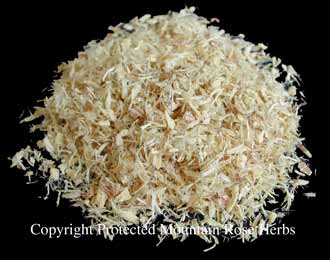Fats and oils are essential nutrients. Fatty deposits in adipose tissue provide:
- A protective cushion around body organs
- An insulating layer beneath the skin
- A concentrated source of energy fuel
Unlike neutral fats cholesterol is not used for energy, its importance is as the structural basis of bile salts, steroid hormones and other essential functional molecules.
Fats represent about 10% of the calories in Oriental diets, yet in American diets they climb over 40%.
The American Heart Association suggests that:
- Fats should represent 30% or less of the total caloric intake.
- Saturated fats should be limited to 10% or less of the total fat intake.
- Daily cholesterol intake shouldn't exceed 250 mg.
The most abundant dietary lipids are neutral fats also called triglycerides. We eat saturated fats in animal products such as meat and dairy foods and some plants like coconut. Unsaturated fats are
present in seeds, nuts, and most vegetable oils. The difference between saturated and unsaturated fats resides on their chemical chain.
Fats and oils:
Fats can be divided into two groups; saturated and unsaturated.
Saturated fats:
Saturated fats are mostly derived from animal products such as meats (cattle and sheep), dairy products and some plants such as coconut, peanut, cottonseed and palm kernel. Saturated fats are solid at room temperature.
In their chemical chain the carbon atoms are saturated with hydrogen. These fats are associated with cardiovascular problems and high cholesterol.Try to minimize their intake to no more than 7% of your total daily calorie allowance.
Unsaturated fats:
Unsaturated fat is a fat that contains at least one double bond within the fatty acid chain. Where double bonds are formed hydrogen is eliminated. Replacing saturated fats with unsaturated ones helps lower the overall levels of LDL cholesterol in the blood.
Foods containing unsaturated fats are: avocado, nuts, canola and olive oils. Meat products contain both, saturated and unsaturated fats.
Monounsaturated oils:
Monounsaturated fatty acids are fatty acids that have a single double bond in the fatty acid chain and the rest of the carbon atoms are single- bonded. They have a higher melting point than polyunsaturated fats and lower than saturated fats. Monounsaturated fatty acids are liquid at room temperature but solid when refrigerated.
Monounsaturated oils strike a balance between saturated and polyunsaturated oils, they don't cause cholesterol to accumulate like saturated fats and they don't become rancid as do polyunsaturated ones. They have another advantage they don't deplete the blood of HDL high- density lipoproteins. At the same time they reduce LDL, low density lipoproteins, which cause cholesterol to be deposited in the arteries.
We find monounsaturated fats along with saturated ones in red meat, dairy products, some fruits such as olives and avocados and olive oil, peanut oil, sesame seed oil, whole grain wheat, oatmeal, safflower oil and sunflower oil.
Polyunsaturated oils:
Polyunsaturated fatty acids are fatty acids in which more than one double bond exists within the representative molecule. Polyunsaturated acids can assume a cis or a trans conformation depending on the geometry of the double bond.
Polyunsaturated oils contain essential fatty acids, linoleic acid and alpha-linolenic acid. Arachidonic acid is in fact a third essential fatty acid, but usually most people have it in excess, because of the high consumption of animal products. Vegetarians can find it in nori seaweed and peanuts.
The essential fatty acids promote healthy skin and hair, proper support for adrenal and thyroid function and are required for growth and energy. They promote healthy nerves and arteries and are crucial in the breakdown of cholesterol.
The problem with these oils is that since they contain two or more double bonds in their molecule that can easily accept oxygen thus leading to rancidity, monounsaturated contain only a double bond and saturated none. As they oxygenate and become progressively more rancid, they create free radicals in the body which promote aging and weaken immunity.
Cis and Trans
The difference between Cis and Trans fatty acids is on the orientation of the Hydrogen atoms in relationship to the double bond. Cis means on the "same side", Trans means "across". Naturally occurring fatty acids generally have Cis configuration. Oleic oil found in olive oil has a Cis configuration, a V shape. Elaidic oil, a trans configuration has a straight line shape.
A brief history of trans fat:
- 1890's Nobel laureate Paul Sabatier worked to develop the chemistry of hydrogenation,which enabled the margarine, oil hydrogenation and synthetic methanol industries. Whereas Sabatier considered hydrogenation of vapors only,
- 1901German chemist Wilhelm Normann went a step forward by hydrogenating liquid oils,
- 1902 Normann patented the process of hydrogenation of liquid oils.
- 1909 Joseph Crosfield & Sons, a plant in Warrington, England began commercial production of the new hardened fat.
- 1909 Proctor & Gamble acquired the US rights of the Normann patent.
- 1911 Proctor & Gamble began marketing the first Hydrogenated shortening: Crisco, compossed largely of partially hydrogenated cottonseed oil. They would give away free cookbooks in which every recipe included Crisco.
- 1937 world War begins and we see an increase in the consumption of margarine because butter is rationed.
- 1957 The American Heart Association first proposes that a reduction on saturated fats can reduce the chances of developing heart disease.
- 1984 Consumer advocate groups campaign against the use of saturated fats for frying in fast food restaurants.
- 1990's Numerous studies show a positive correlation between the use of trans fats and an increase on LDL (bad cholesterol) levels and heart disease.
- 1999 US government proposes a law requiring food manufacturers to list trans fat amounts on their food labels.
- 2006 Trans fat labeling becomes mandatory in the USA. The American Heart Association specifies that the limit of trans fat should not exceed 1% of the daily caloric intake.
For more information, please visit www.heart.org/cholesterol/prevention

